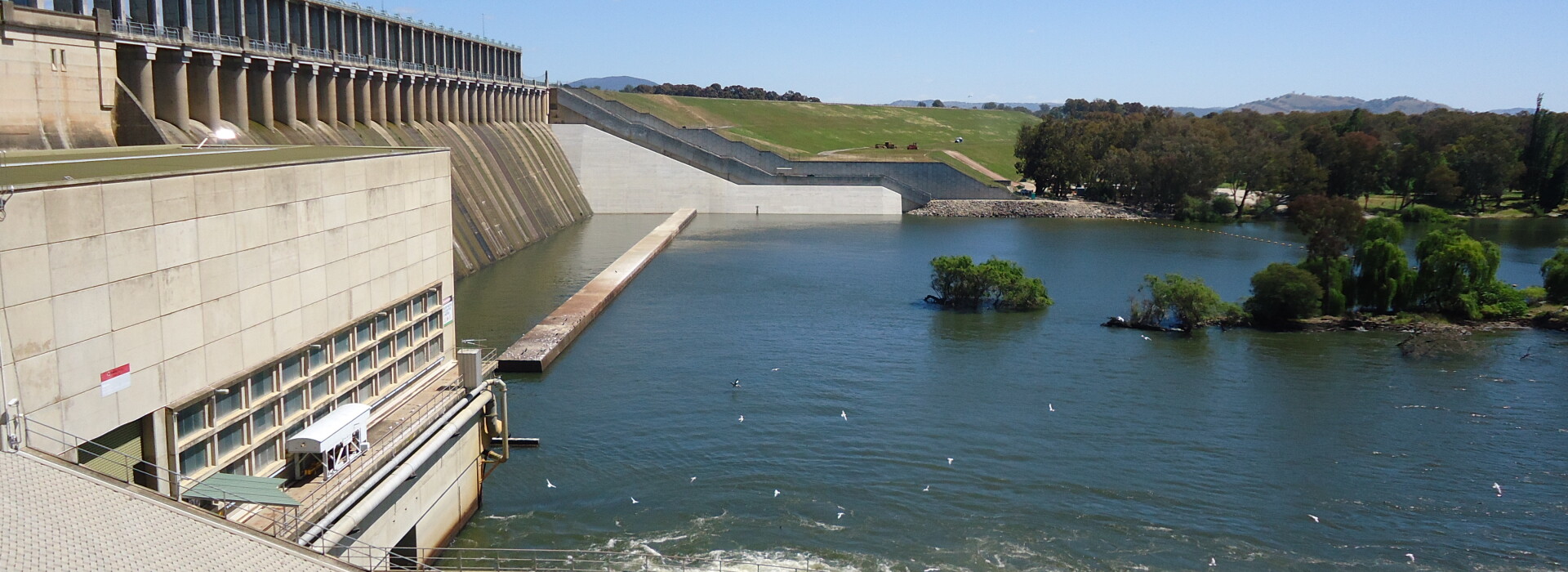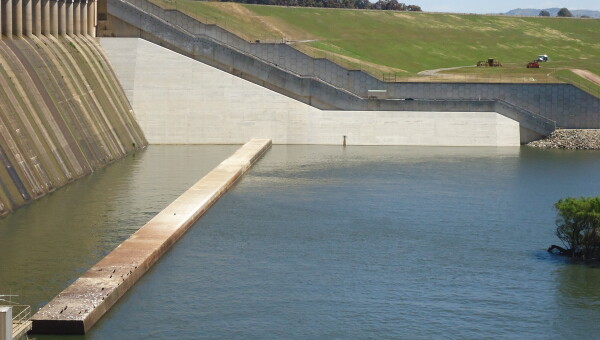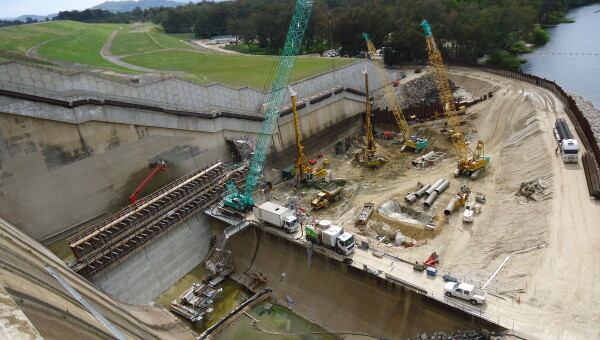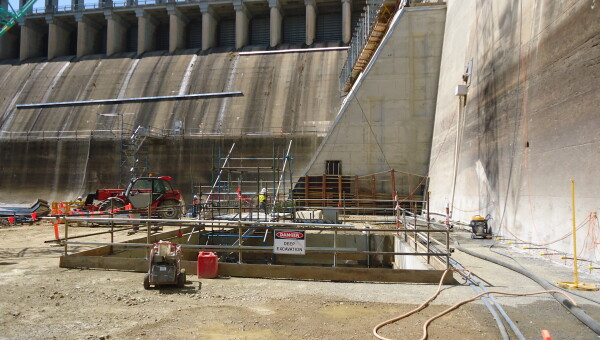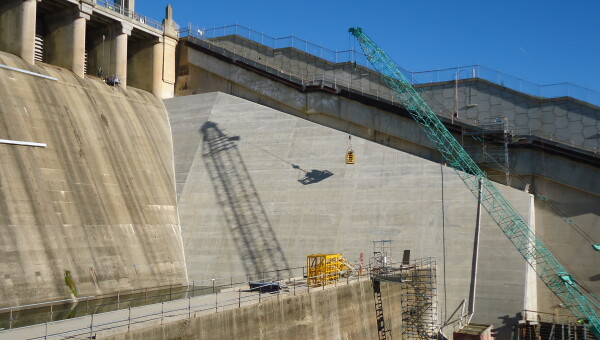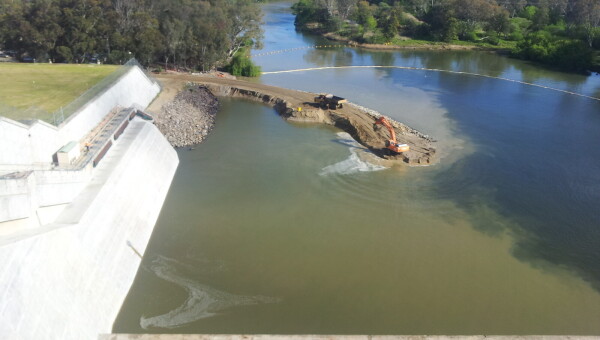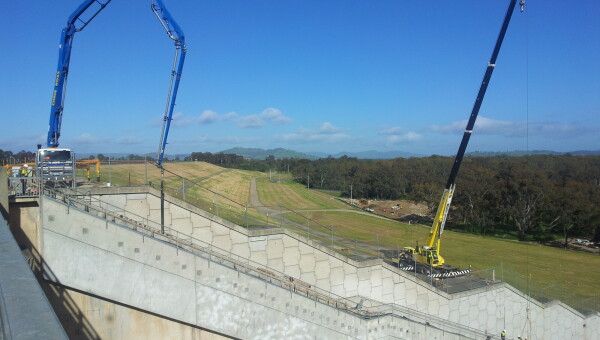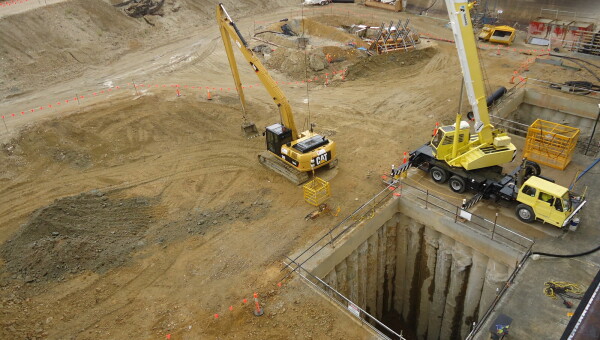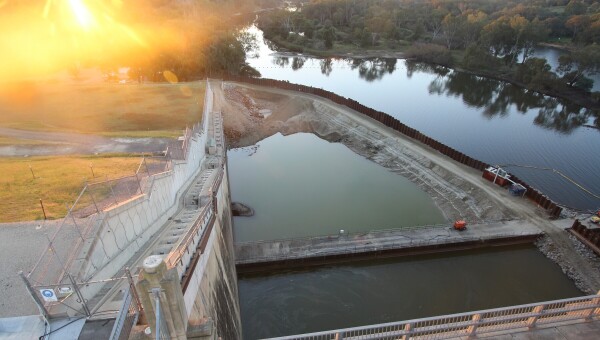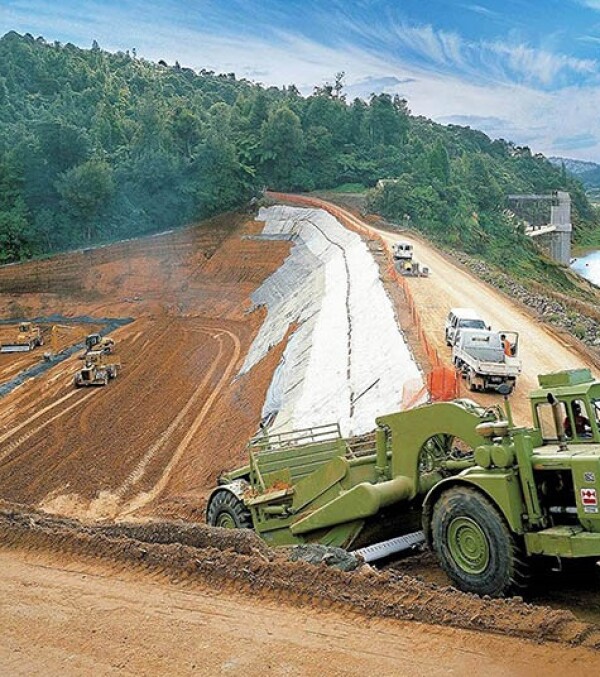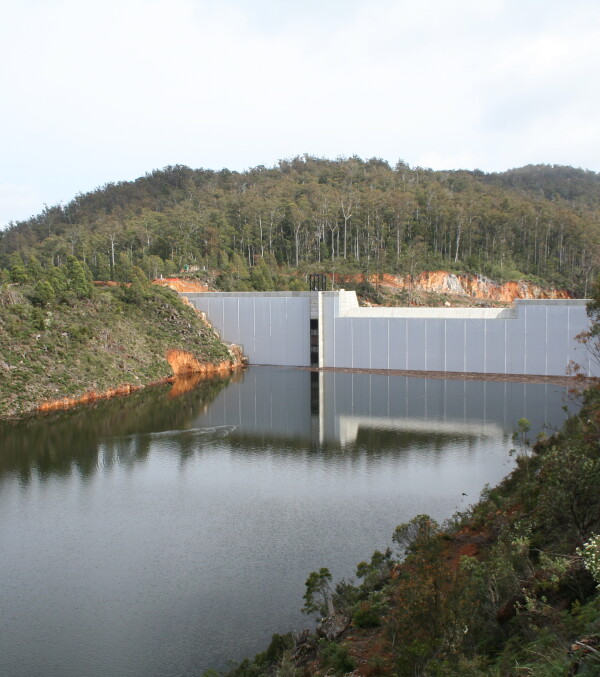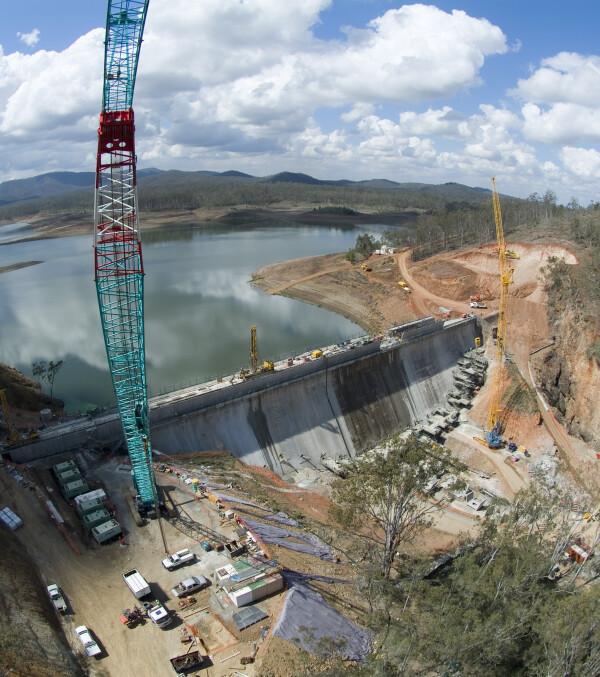|
Customer: State Water Corporation, NSW Contract: Design and Construct Location: Albury, New South Wales |
Fast Facts
|
We improved the safety and performance of one of the largest dams in the Southern Hemisphere for the NSW state government. They selected us based on the quality of our technical solution, our approach to protecting the sensitive river environment, and our strategies for minimising impacts on the nearby tourist park.
We secured the project after an extensive pre-qualification and competative early tender involvement (ETI) process.
The essence of the project was the design and construction of a mass concrete buttress wall founded on 92 piles to strengthen the southern training wall of the Hume Dam on the mighty Murray River.
Our scope of work included:
- design and construction of a major temporary rockfill and sheetpile cofferdam to provide access nine metres below maximum river level
- design and construction of steel and rockfill cofferdam in the stilling basin at the base of the spillway
- dewatering and excavation of the river bed sediments.
- construction of secant piles foundation cells against the existing southern training wall
- pouring of 20,000 m3 of mass concrete
- de-stressing and decommissioning of horizontal tieback anchors.
Complex Piling Solution
The piling solution was a hard-hard secant pile wall running parallel with the dam training wall, with shorter walls extending perpendicularly and intersecting with the existing concrete dam structure. Primary piles of 1180 mm diameter were cut into secondary piles of 1300 mm diameter on a 1000 mm centre to centre spacing, to create a 240 mm overlap to prevent water ingress into the cell once excavated.
92 piles in total were installed to 16 m depth (13 m exposed after excavation) to high tolerances, within an area of significant groundwater. Down-hole surveys were undertaken to provide certainty that all piles were constructed within a verticality tolerance of 1 in 200.
In addition to the technical complexity of working on a large dam wall, two of the key challenges on the project were environmental management and community engagement.
Environmental Management
A dedicated suite of ‘Environmental Protection Instructions’ was developed that allocated responsibility and provided specific targets and mitigation measures in relation to various aspects; ranging from erosion and sediment controls; to prevention of invasive plants; weeds and disease; and the storage, maintenance and refuelling of machinery.
Surplus spoil material from the works excavations were deposited on land managed by State Water. Erosion and sedimentation controls were implemented to stabilise the area and prevent migration of the spoil including: contouring to control run-off; installation of drains; hydromulching to stabilise the area; and installation of silt fencing.
The site stormwater outlet to the river was diverted around the cofferdam and a silt curtain was placed in front of the discharge location to capture any silt runoff from the entire site (including mainly non-construction areas) prior to discharge to the river. The use of silt curtains to prevent silt entering the river was a necessity to protect the aquatic life of the river. The project team chose the strongest available silt curtain to ensure durability in the fast river currents adjacent to the dam outlet.
As well as minimising adverse environmental impacts, the construction aimed to maximise environmental opportunities. As an example, during construction of the cofferdam, many fish were stranded prior to the dewatering process. This provided an opportunity to control, euthanise and dispose of pest species such as carp, then returning only native species to the river unharmed. The project team worked closely with State Water and Department of Primary Industries – Fisheries and Aquaculture, to undertake the work in line with all ethical and legal requirements.
Community Engagement
The community was kept continuously informed on project progress through the local media and information on the State Water website. The project team sourced many suppliers and subcontractors locally.
Local fundraising events were arranged by the project for local causes, including assistance in purchasing a vehicle for a disabled student; fundraising for the local hospital and donations of material to the local sailing club. Site tours for engineering groups and local organisations were also held throughout construction on the project
With a resort and tourist park located approximately 400 m from site, the project team worked hard to develop a good neighbourly relationship with staff and residents. The project team considered the community during the entire project, minimising sound and any adverse effects from drilling and night works. This is best represented by the team receiving no reports of disturbance from owners or guests.

